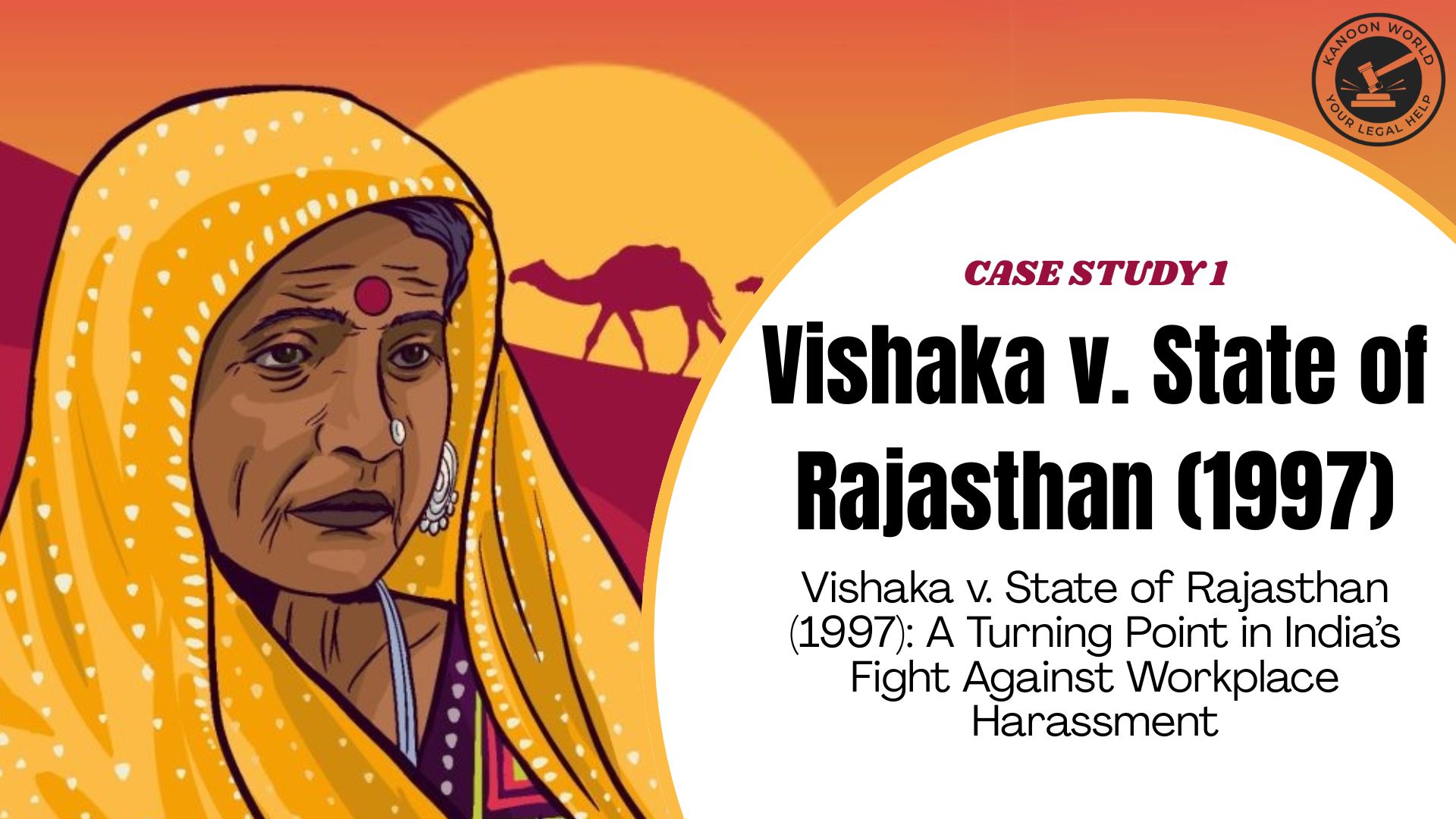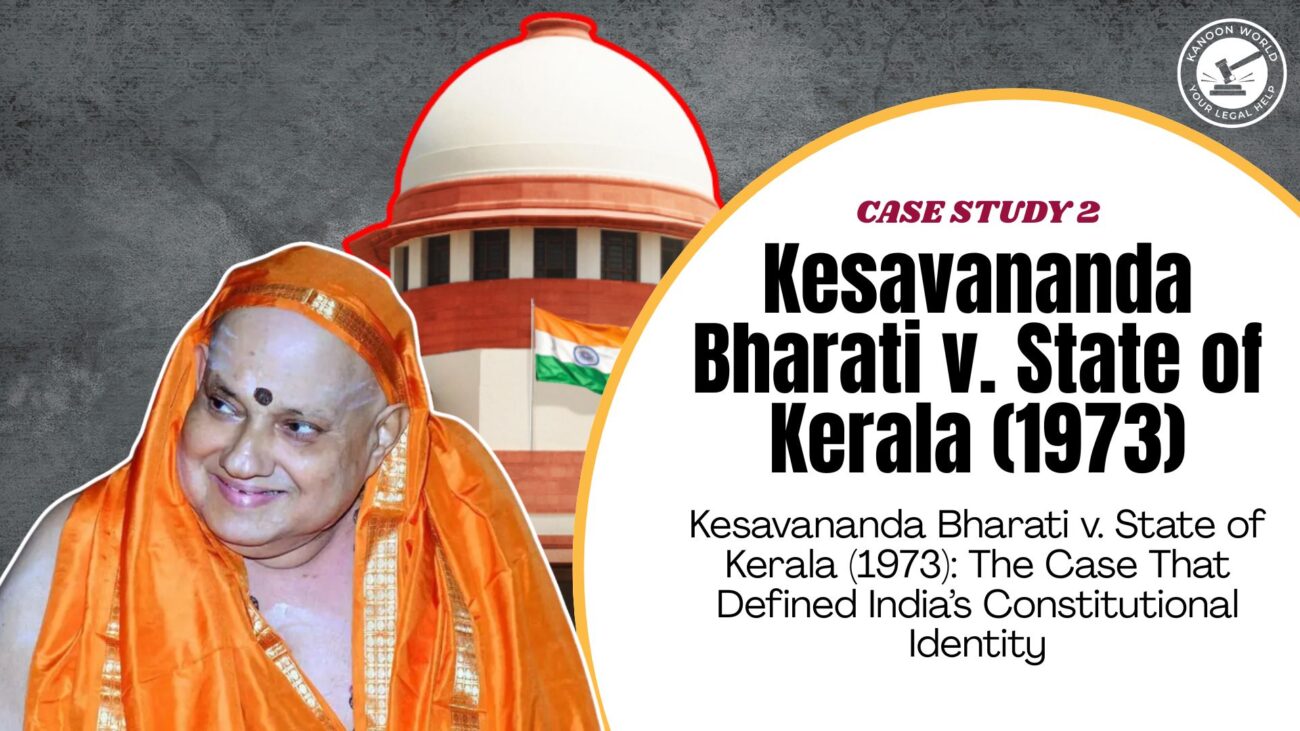Topic: Sexual Harassment at the Workplace
Court: Supreme Court of India
Citation: AIR 1997 SC 3011
Background:
This landmark case was triggered by the brutal gangrape of a social worker, Bhanwari Devi, in Rajasthan who was trying to prevent child marriage. At the time, there were no specific laws in India addressing sexual harassment at the workplace.
Legal Issue:
Whether the lack of legislation could deny women protection against sexual harassment at the workplace, and what legal recourse was available.
Judgment:
The Supreme Court, invoking Article 14, 15, 19 and 21 of the Constitution, laid down the Vishaka Guidelines—a comprehensive framework for employers to follow to ensure women’s safety at work.
These guidelines became the basis for the Sexual Harassment of Women at Workplace (Prevention, Prohibition and Redressal) Act, 2013.
Impact:
- First-ever legal framework in India to recognize and address sexual harassment at workplaces.
- Made it mandatory for organizations to have an Internal Complaints Committee (ICC).
- Strengthened the rights and dignity of working women across India.
In a country as diverse and vast as India, the rights and dignity of women have long been at the center of social and legal debates. Among the most defining legal battles in the realm of women’s rights was the Vishaka v. State of Rajasthan case. This landmark judgment by the Supreme Court of India in 1997 laid the foundation for the first formal legal framework to tackle sexual harassment at the workplace, a subject that had previously remained in the shadows of India’s judicial landscape.
The Background: A Story of Courage
The case was born out of the tragic and courageous struggle of Bhanwari Devi, a social worker in Rajasthan, who worked with the state’s Women’s Development Programme. In 1992, Bhanwari tried to stop a child marriage in her village, a legal offense under the Indian law. Her intervention angered the powerful upper-caste family involved in the marriage. In a horrific act of retaliation, she was gang-raped by five men from the village, in front of her husband.
Despite reporting the incident, she was denied justice at multiple levels. The medical reports were inconclusive, there were delays in registering the case, and the accused were eventually acquitted by the trial court. This act of violence and the failure of the legal system to protect her stirred a nationwide outcry and mobilized several women’s organizations.
The Legal Battle Begins
It was at this point that a group of NGOs, under the banner of Vishaka, filed a Public Interest Litigation (PIL) in the Supreme Court of India. They argued that the incident represented not just a failure of law enforcement, but a glaring absence of legal provisions that specifically addressed sexual harassment at the workplace.
The PIL demanded immediate judicial intervention to fill the legal vacuum, as there was no legislation in India at the time that specifically dealt with workplace sexual harassment.
The Supreme Court’s Historic Verdict
On 13 August 1997, the Supreme Court delivered a landmark judgment in the case of Vishaka v. State of Rajasthan. The court acknowledged the absence of specific laws to address sexual harassment at the workplace. To bridge this gap, it issued a set of binding guidelines for all workplaces across the country.
These came to be known as the Vishaka Guidelines.
Key Features of the Vishaka Guidelines
- Definition of Sexual Harassment:
The court clearly defined what constitutes sexual harassment, including physical contact and advances, demands or requests for sexual favors, sexually colored remarks, showing pornography, and any other unwelcome physical, verbal or non-verbal conduct of sexual nature. - Preventive Steps:
Employers and institutions were asked to take proactive steps to prevent harassment. This included awareness workshops and a clear company policy against sexual harassment. - Complaint Mechanism:
Every workplace was required to establish a complaint committee, which should be headed by a woman and include a third-party NGO or individual familiar with issues of sexual harassment. - Confidentiality:
The identity of the complainant and the details of the complaint must be kept confidential to protect the dignity of the victim. - Disciplinary Action:
The employer was made responsible for taking prompt disciplinary action if the complaint was found to be valid. - Monitoring and Accountability:
Organizations were encouraged to monitor the implementation of these guidelines and submit annual reports on the number of cases and their redressal.
Impact of the Judgment
The Vishaka Guidelines were treated as law of the land under Article 141 of the Constitution until Parliament enacted a specific law. For over 15 years, these guidelines served as the only protection available to working women against sexual harassment.
Eventually, the Sexual Harassment of Women at Workplace (Prevention, Prohibition and Redressal) Act was passed in 2013, incorporating most of the provisions from the Vishaka Guidelines. This law marked a monumental shift in how workplaces viewed gender sensitivity and employee safety.
Broader Significance
The Vishaka judgment was not just a response to a single incident. It was a statement by the Supreme Court that gender equality is not optional. It highlighted the court’s willingness to interpret constitutional rights such as Articles 14 (Equality), 15 (Non-discrimination), 19 (Freedom) and 21 (Right to Life and Dignity) in a broader, progressive sense.
This case became a symbol of judicial activism, where the court did not wait for legislative action but stepped in to protect the fundamental rights of women.
Conclusion
The story of Vishaka v. State of Rajasthan is not just about a legal ruling; it’s about courage, justice, and change. It reminds us that the fight for equality and dignity is ongoing, and that legal systems can be powerful tools for transformation.
For aspiring law students, legal professionals, and advocates of human rights, this case serves as a benchmark of judicial progressiveness and the importance of public interest litigation.
In today’s digital age, where workplace boundaries are expanding into virtual spaces, the legacy of the Vishaka judgment continues to inspire stronger policies and safer environments for women.








